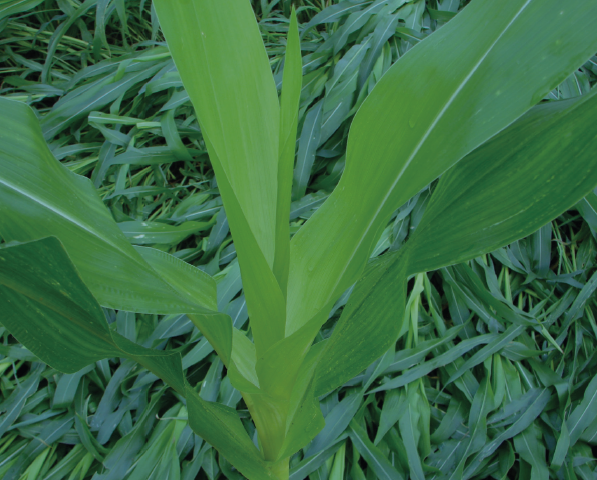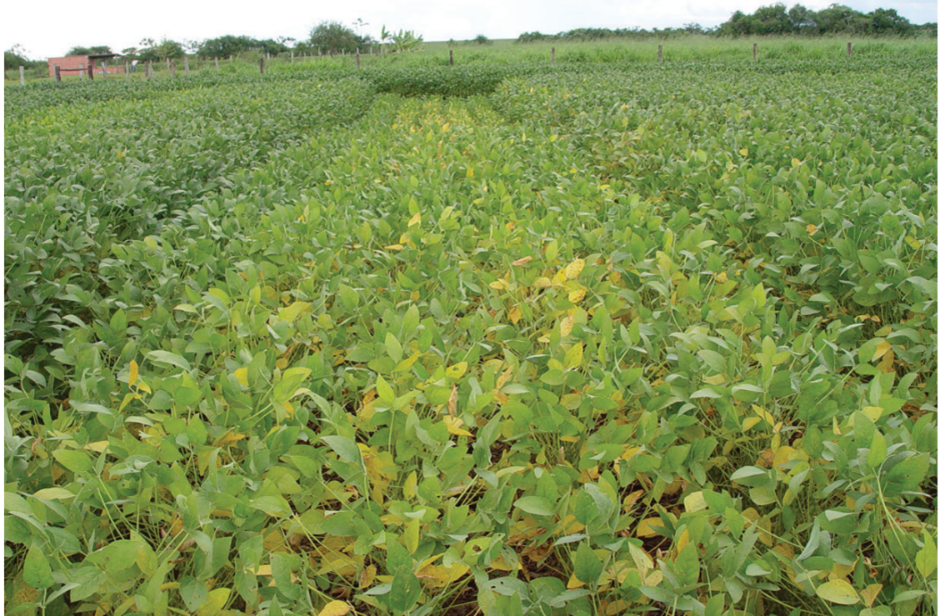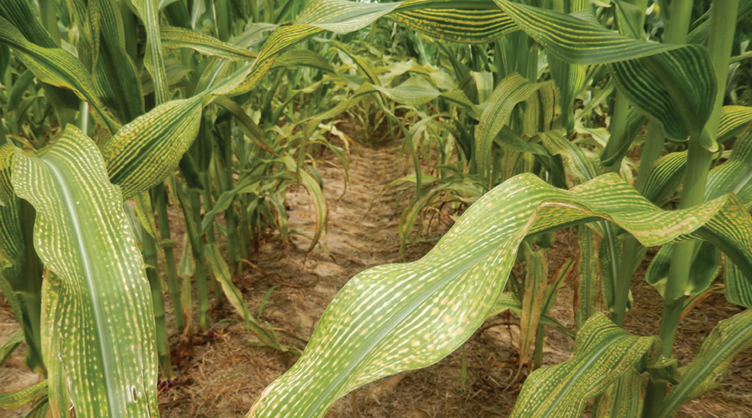Ion charges and secondary (=meso) nutrients: Calcium, Magnesium and Sulphur
The secondary nutrients are Calcium (Ca), Magnesium (Mg, not Mn), and Sulphur (S). They are needed in moderate (=’meso’) amounts compared to macro (N, P, K) and micronutrients. Only Magnesium can be moved from old to young leaves. Like Nitrogen, Sulphur occurs as negatively charged (Sulphate, SO42-), is easily lost to air and leaching, and deficiency causes yellowish leaves. Ions with the same charge tend to compete, while those with opposite charges can help each other to be adsorbed to surfaces or absorbed into plants (synergy). To understand the positively charged Ca and Mg ions, some general background info is relevant.
Positive ions (cations): Ca2+, Mg2+ competing with e.g. K+
Soils have surfaces where charged particles (ions) can be exchanged with ion of similar charge. Usually, positive ions are exchanged mainly on surfaces of clay and organic matter. Potassium (K+), Calcium (Ca, Ca2+), and Magnesium (Mg, Mg2+) have positively charged ions (cations) like K+. Therefore, they compete in soils and plants for sorption and uptake sites with each other, with H+ and Aluminium cations (e.g., as Al3+ in acid soil). Ca2+ is usually available in the highest amount. Ca deficiency is often seen in a collapsed structure in shoots, roots, or fruits, where little transpiration flow occurs.
A high ratio of monovalent cations (K+ and Na+) to divalent cations (Ca2+ and Mg2+) can damage the soil structure by dispersions. This is because the divalent can join two particles together.
Also, the ratios among the exchangeable cation in the soil are important, including having enough Ca and Mg.
Sodium (Na) is neither an essential nor a secondary nutrient. However, it can be an important cation in some soil, but it is not an essential plant nutrient and is toxic (like chloride) to most plants in relatively small concentrations. However, Sodium can, to some extent, replace K in, e.g., beetroot crops and Irish potatoes.
K+ can also compete with Ca2+ to sorption sites, plant uptake, and when eating.
High levels of K (and other nutrients) in the grass can reduce the content of Magnesium in fodder. It can e.g. suddenly be dangerous for livestock starting grazing after a winter or long dry season. The nervous system is stressed by grass tetani. [1] See more under Magnesium.
Several cations are also mentioned in the article on micronutrients (and a few negatively charges micronutrients). However, the ions found in big amounts affect the uptake of those found in small amounts directly by competition.
Cations and salt-affected, acid, or alkaline soils
Calcium (Ca, Ca2+) and Magnesium (Mg, Mg2+) are positively charged ions (cations) like K+ and can therefore compete in soils and plants for sorption and uptake sites with each other, with the “acidic cations” H+ and Aluminium cations (e.g., Al3+ and combinations with hydroxide OH–).
Having two charges (being divalent), Ca2+ (and Mg2+) can bind two molecules together and be important for the structures of soils and organisms – including Calcium in a plant’s cell wall. This is used when applying gypsum (CaSO4) to soils where monovalent cations (K+ and or the directly plant toxic Na+) accumulate. This can happen due to a lack of leaching, often in dry irrigated areas with poor drainage systems and insufficient irrigation). Both soil particles and organic matter can disperse into loose particles, spoiling the soil aggregate structure, and sometimes the soil pH gets very high. If salts can be tasted in irrigation water (or it is polluted), care is needed, and analysing it is relevant for pH, Electric Conductivity (EC), and ion content. If working in irrigated semi-arid or arid areas, it can be useful to search the internet or books for words like black (or) white alkali/alkaline or saline soils. Black alkali soils occur when alkalis disperse organic matter giving black surfaces on soil particles. Salt accumulation can give white colour. [2] In such areas, Exchanging Na+ with Ca2+ by applying CaSO4 combined with leaching is one of the methods to reclaim or maintain salt-affected soils. [3] Seasonal leaching and good drainage in time are also often neglected, so soils are spoiled or damaged by salts, alkalinity and/or swamp formation.
Calcium (Ca, Ca2+)
Ca deficiency is often seen in a collapsed structure in buds, new shoots, roots, or fruits, where little transpiration flow takes place. This is due to Ca movements in the plants only being driven by transpiration streams, so deficiency is challenging, e.g. carrot roots, inside lettuce or buds forming fruit or other new tissues. It gives an unpleasant, chaotic appearance, unlike, e.g., iron deficiency, also yellowing young parts.
Ca2+ is usually the dominant one of several “basic” cations that can replace “acid” Aluminium and hydrogen cations on soils’ ion exchange sites. Calcium can also be applied directly to increase soil pH to an optimum level. However, liming reduces the availability of micronutrients (but increases it for Molybdenum), and outdated guidelines often result in a too high pH for a crop and soil. Calcite (CaCO3), or even more effectively, the corrosive burned lime (CaO), can be used by broadcasting with some years interval or placement in small doses, so roots better penetrate acid subsoil. Ash from unpainted wood and other biomass can also be used, e.g., as a placed Ca source. Soil pH is described more in the soil and plant analysis and identification article. Ca can also often occur as a calcium magnesium (Mg) carbonate (Dolomite), which can be used for liming and nutrient supply.
Magnesium (Mg, Mg2+)
Mg deficiency causes broad pale lines between nerves of leaves as it is used for photosynthesis starting on the older leaves (unlike the younger leaves for Manganese (Mn) deficiency.
High levels of the competing cations K+ and Ca+ can reduce Mg2+ uptake and use, because they are applied or found in much higher amounts, and at least Ca is similar. Low levels of Magnesium compared to other cations can damage livestock. High intake of Calcium, fat, or Sodium by livestock causes thirst, water, and urine excretions of Mg, which can cause Mg deficiency, suddenly affecting nerves and muscle control (when they suddenly start to eat much fresh grass, for example). Mg deficiency can be caused by NPK fertilizers that can decrease plant uptake of, e.g., Mg from the soil if Mg is neither applied with fertilizer, manure, or the Mg-rich Dolomite lime.

Figure 1. Sulphur deficiency in maize causes yellowing first of younger leaves. With permission: Crop Scout Pocket Guide for Maize, African Plant Nutrition Institute (APNI) 2020.
Sulphur (S)
Sulphur has much in common with nitrogen and is e.g. being found most as a negatively charged Sulphate ion (SO42- anion) and easily lost to leaching. It is not toxic or antiseptic unlike sulphite SO32- and e.g. the Copper in the fungi toxic Copper Sulphate. In a few places, wet tropical soils can release Sulphuric Acid from the mineral pyrite (“fool’s gold”) if drained. About half of the S is usually lost (but all the N) when organic matter is burned. It can also be stored and released from organic matter. The S-containing amino acids are the most likely to be deficient in food or fodder. S deficiency mainly occurs where other fertilizer types without Sulphate have been applied for some years. S-containing soil improvers (fertilizers and amendments) include Ammonium Sulphate (NH4)2SO4 and single and double phosphate fertilizers (unlike triple phosphate). They also include the pH-neutral Ca-fertilizer gypsum (CaSO4) soil amendment as well as used for “salt” (Na+, K+) affected soils. S deficiency and N deficiency can be confused, e.g. soybean often fails to fix N from the air in new fields without supplying compatible N-fixing rhizobia bacteria (inoculation). The N fixation requires adequate levels of S and other nutrients. For S-deficiency see Figure 2.

Figure 2. Sulphur deficiency here in soybeans cause yellowing like N-deficiency but tends to start in the younger leave. Credit: Crop Scout Pocket Guide for Soybean, African Plant Nutrition Institute (APNI) 2021.
References:
[1] Grass Tetany: A Disease of Many Challenges (psu.edu)
[2] Saline-Alkali (Sodic) Soils: Definition, Classification and Distribution (soilmanagementindia.com)
[3] Management of Saline and Sodic Soils | Problem Soils | Soil Management (soilmanagementindia.com)
More reading:
Reetz H F (2016): Fertilizers and their Efficient Use. IFA, Paris, France, May 2016 Library (fertilizer.org)
Sustainable Plant Nutrient Management (SPNM): An overview
Sustainable Nutrient management: Introduction to concept, strategies, and principles
Nutrient conservation and cycling
Mineral fertilizers (including ash) and sustainability
Biological Nitrogen Fixation and seeding Legumes for Soil Fertility
The importance and management of Phosphorus (P) and Potassium (K) in plant production
Ion charges and secondary (=meso) nutrients: Calcium, Magnesium and Sulphur
How important are the Micronutrients for plants
Soil and plant analysis and field observations
When are approaches to Plant Nutrient Management actually Sustainable?









































































